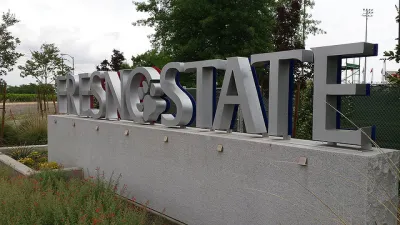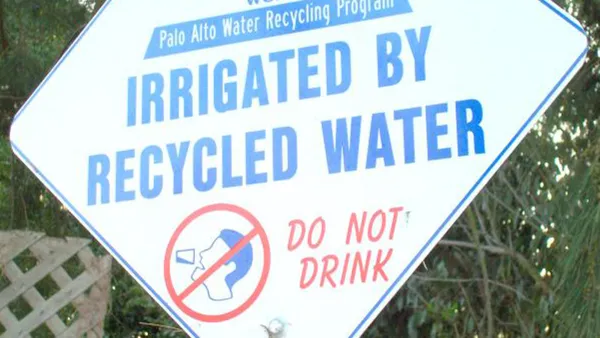Recently termed-out Mayor Ashley Swearengin sits down for an exclusive interview about how she planned for high speed rail investments, championed sustainable water management, and took steps to rebuild the local economy.

Over the past eight years, Fresno has been in the skilled hands of Ashley Swearengin. In an era of rapid private-sector innovation and relatively diminished public capacity, cities like Fresno have struggled to fund infrastructure and grow their economies due to changing conditions.
Fresno, however, managed to reduce costs and utilize the markets that were created by investments around California High Speed Rail. In an exclusive interview with The Planing Report, Swearengin speaks to how civic leadership reoriented the market and inspired reinvestment in the downtown core. Swearengin, who previously stated that "high-speed rail, by itself, will not be enough to move Fresno toward its vision," spoke to the need of maximizing housing and mixed-use development.
Swearengin explains that "connecting Fresno to Silicon Valley in 45 minutes for $80 will absolutely be a game-changer for [Fresno], and for the whole Central Valley. As mayor, I wanted to make sure we did not let that incredible opportunity go to waste. That meant being very clear about how we could accommodate additional investment in a way that reinforced our revitalization goals, instead of setting up Fresno, and the whole Central Valley, for more sprawl."
Swearengin explains that Fresno "wanted to reorient the market that is opening up as a result of high-speed rail toward high-value development investment—not more cookie-cutter homes built on the periphery to access the transportation hub in Fresno. That’s why it was so important that we took on the land-use planning and regulatory changes, and the redirection of our infrastructure dollars." Otherwise, she worried that Fresno could end up with a scenario where it becomes so easy to access Silicon Valley that the Central Valley becomes nothing but a sprawling bedroom community forever.
The former mayor also talks about her new role as CEO of the Central Valley Community Foundation, seeking to enhance foundation, investor, and private sector investments in the region to support long-term sustainability and growth.
FULL STORY: Leadership & Wise Investments Have Served Fresno Well: Mayor Ashley Swearengin Exit Interview

National Parks Layoffs Will Cause Communities to Lose Billions
Thousands of essential park workers were laid off this week, just before the busy spring break season.

Retro-silient?: America’s First “Eco-burb,” The Woodlands Turns 50
A master-planned community north of Houston offers lessons on green infrastructure and resilient design, but falls short of its founder’s lofty affordability and walkability goals.

Delivering for America Plan Will Downgrade Mail Service in at Least 49.5 Percent of Zip Codes
Republican and Democrat lawmakers criticize the plan for its disproportionate negative impact on rural communities.

Test News Post 1
This is a summary

Test News Headline 46
Test for the image on the front page.

Balancing Bombs and Butterflies: How the National Guard Protects a Rare Species
The National Guard at Fort Indiantown Gap uses GIS technology and land management strategies to balance military training with conservation efforts, ensuring the survival of the rare eastern regal fritillary butterfly.
Urban Design for Planners 1: Software Tools
This six-course series explores essential urban design concepts using open source software and equips planners with the tools they need to participate fully in the urban design process.
Planning for Universal Design
Learn the tools for implementing Universal Design in planning regulations.
EMC Planning Group, Inc.
Planetizen
Planetizen
Mpact (formerly Rail~Volution)
Great Falls Development Authority, Inc.
HUDs Office of Policy Development and Research
NYU Wagner Graduate School of Public Service



























